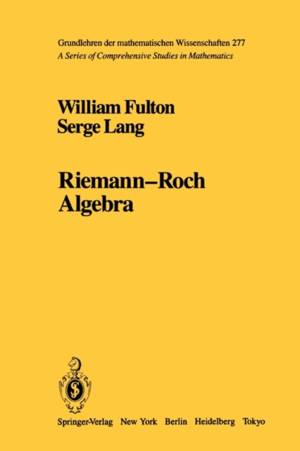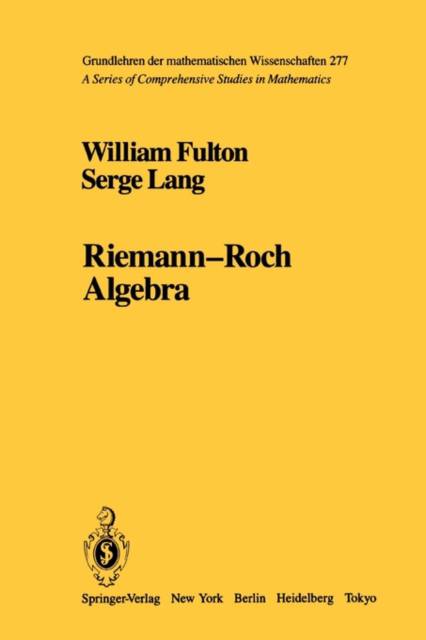
Je cadeautjes zeker op tijd in huis hebben voor de feestdagen? Kom langs in onze winkels en vind het perfecte geschenk!
- Afhalen na 1 uur in een winkel met voorraad
- Gratis thuislevering in België vanaf € 30
- Ruim aanbod met 7 miljoen producten
Je cadeautjes zeker op tijd in huis hebben voor de feestdagen? Kom langs in onze winkels en vind het perfecte geschenk!
- Afhalen na 1 uur in een winkel met voorraad
- Gratis thuislevering in België vanaf € 30
- Ruim aanbod met 7 miljoen producten
Zoeken
Omschrijving
In various contexts of topology, algebraic geometry, and algebra (e.g. group representations), one meets the following situation. One has two contravariant functors K and A from a certain category to the category of rings, and a natural transformation p: K--+A of contravariant functors. The Chern character being the central exam- ple, we call the homomorphisms Px: K(X)--+ A(X) characters. Given f: X--+ Y, we denote the pull-back homomorphisms by and fA: A(Y)--+ A(X). As functors to abelian groups, K and A may also be covariant, with push-forward homomorphisms and fA: A( X)--+ A(Y). Usually these maps do not commute with the character, but there is an element r f E A(X) such that the following diagram is commutative: K(X) A(X) fK j J A K( Y) ------p;-+ A( Y) The map in the top line is p x multiplied by r f. When such commutativity holds, we say that Riemann-Roch holds for f. This type of formulation was first given by Grothendieck, extending the work of Hirzebruch to such a relative, functorial setting. Since then viii INTRODUCTION several other theorems of this Riemann-Roch type have appeared. Un- derlying most of these there is a basic structure having to do only with elementary algebra, independent of the geometry. One purpose of this monograph is to describe this algebra independently of any context, so that it can serve axiomatically as the need arises.
Specificaties
Betrokkenen
- Auteur(s):
- Uitgeverij:
Inhoud
- Aantal bladzijden:
- 206
- Taal:
- Engels
- Reeks:
- Reeksnummer:
- nr. 277
Eigenschappen
- Productcode (EAN):
- 9781441930736
- Verschijningsdatum:
- 3/12/2010
- Uitvoering:
- Paperback
- Formaat:
- Trade paperback (VS)
- Afmetingen:
- 156 mm x 234 mm
- Gewicht:
- 308 g

Alleen bij Standaard Boekhandel
+ 366 punten op je klantenkaart van Standaard Boekhandel
Beoordelingen
We publiceren alleen reviews die voldoen aan de voorwaarden voor reviews. Bekijk onze voorwaarden voor reviews.









